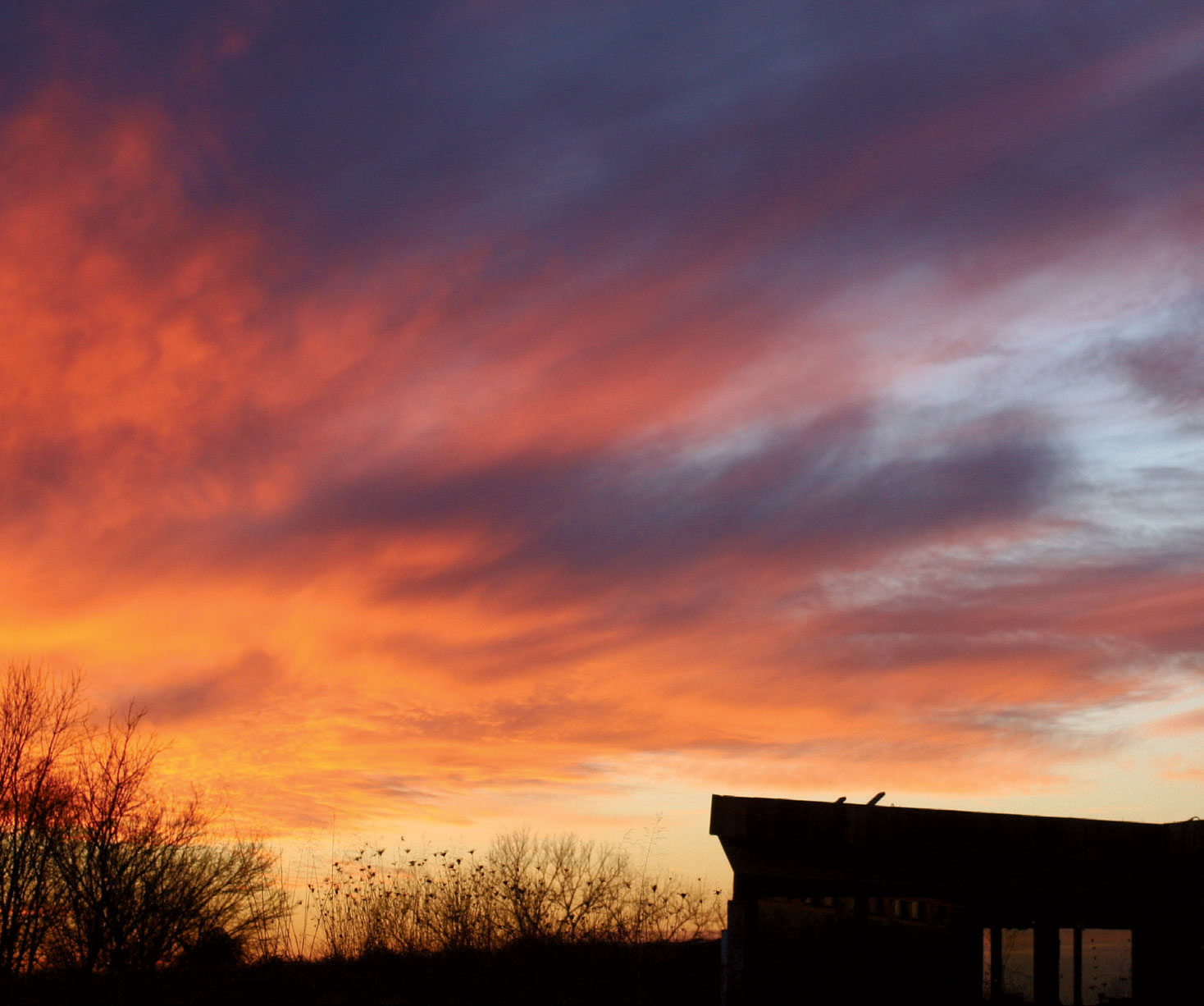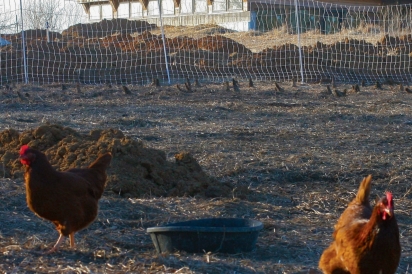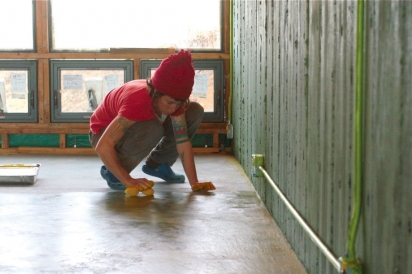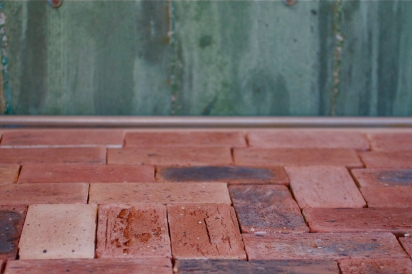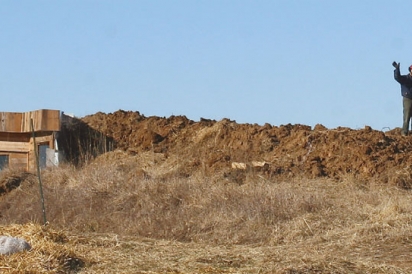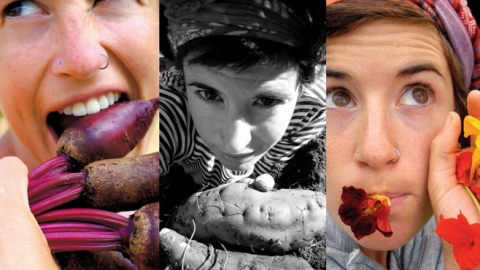Talk Dirty To Me: On Homesteading, Organic Farming, Hobbit Home Update
Spring 2015
Q&A with Farmer Brooke
So how does homesteading compare with Voluntary Simplicity and the other forms of downsizing we hear so much about today?—Roger, KCMO
Homesteading (or providing your own food and various basic needs) is a direct result of voluntary simplicity, in my opinion. Once you choose to “live a simple life” and remove yourself from corporate consumption and materialism, one must create nourishing alternatives for providing the basics like food. Growing gardens, raising chickens, preserving the harvest (so on and so forth) are not only practical endeavors with life-sustaining results, they provide tremendous satisfaction and serve as source of (gentle) entertainment, personal fulfillment, and empowerment. Very few people find real fulfillment in their highly specialized, highly specific 9 to 5 jobs (which may or may not be contributing to the world in a positive way). Growing a garden and “getting back to the land” even in a small, urban backyard provides real results in real time. Few pleasures can compare with that of harvesting your very first tomato ripe from the vine, and sinking your teeth into it’s flesh as juice dribbles down your chin. It’s the experience of simple pleasures like this that provide the groundwork for downsizing and removing oneself from the material-driven “rat race”.
With every garden I plant, with every egg I collect, with every mason jar I cram full of food for winter, I desire less and less “stuff”. Satisfaction and self-worth are no longer found in material possessions or professional stature, but in the richness of one’s soil and the fullness of her pantry. It is a natural evolution, one that doesn’t have to be forced, and it begins with planting seeds. What follows is more than crops, but a basic appreciation for life in it’s purest form. We humans don’t need smart phones, GPS, microwave meals, global manufacturing, netflix, or fancy houses in the suburbs…we need simple shelter, warmth from fire, energy from the sun, plenty of compost, and community. It is a simple equation for happiness and the resources are provided by the land itself.
What would your ideal daily homesteading routine look like?—Joanne, Topeka
As a commercial grower, I often yearn for the freedom to focus on my own personal homesteading endeavors. As of now, the majority of my energy goes into building my farm and growing food for the community. My ultimate goal is to create a successful farmstead (with employees!) that will one day allow me at least two days a week to leisurely live-out my homesteading fantasies. They go a little something like this: Wake up just before sunrise. Make a fire in the cook stove. Grind coffee, boil water, steep, sip Suit up and waltz outside as the sun rises salmon pink. Do chores (feed and water livestock, milk goats, etc.)…happy child in tow! Return to house, make breakfast (farm egg omelette with homegrown spinach and fresh chevre, sourdough toast with homemade strawberry jam), enjoy a hearty breakfast with my family overlooking the lushness of the fields. Soak beans and prepare bread/pizza dough for the first rise. Head out to the fields no later than 10 AM. Collect eggs, stroll through orchards, head to my personal garden to weed and maintain…(somewhere in-between punch down dough for second rise). Return to kitchen by noon with freshly harvested salad and “pizza fixings” in hand. Form pizza crust and loaf. Fire up oven, prepare and bake pizza (topped with yesterday’s homemade mozzarella). Eat lunch with family. Return to field (pick whatever fruit is in season), spend the afternoon canning or freezing a round of preserves and making fresh ricotta from extra milk. Perform evening milking, harvest fresh veggies for dinner and prepare, eat picnic style on green roof as the sun sets over the city, and sip homemade wine from last year’s vintage.
*May I remind you that Joanne said “ideal” not realistic(!!)…and that is my ideal homesteading routine. Now if only we could cultivate children that didn’t complain, fields that weeded themselves, and vegetables that jumped into crates and took themselves to market…
If you were asked by someone who raised one large crop, apples for example, how to raise them organically and still profit without using chemicals, what would you –as an organic farmer-tell that farmer, assuming he’d already tried doing that without success?—Terry, Lone Jack
There is a misconception about organic farming in that it only pertains to “using” or “not using” chemicals when in fact it encompasses an entire lifestyle, relationship, and approach to the land. It is not realistic to take a perennial crop, a deeply rooted tree like an apple, and suddenly remove the only defenses it has ever known (routine pesticides, fungicides, and chemical fertilizer) especially without having laid a holistic groundwork from which it could feed. The human body is a perfect comparison- take most children today (highly vaccinated at birth, fed GMO soy formula instead of breast-milk, bathed and “sterilized” daily with chemical-based products, given antibiotics for every minor illness, fed a steady diet of processed foods, etc.). The conventional tree (like the conventional child) does not possess a thriving “microbiome” within it’s root system due to it’s style of up-bringing. At this point, the tree’s immune system is sorely compromised. Just like the child that has developed allergies, the tree no longer possesses natural defenses against environmental conditions in the form of disease and pest pressure. In a chemical system, it is only chemicals that will allow that tree to produce marketable fruit if any fruit at all.
So, I would tell this farmer (if truly interested in raising organic fruit) that the success of organic fruit production will take many years. It might be a good idea (if you’re relying on the income from the apples) to gradually remove conventional sprays over a couple of seasons. Fungicides and herbicides should go immediately; they are destroying the ecology of the very soil that the organically grown tree depends upon. Generous amounts of wood mulch, compost and even compost tea or essential microbes create the ideal healthy fungi and bacteria of an orchard floor (the wood mulch will also suppress weeds). Begin planting perennial flowers and herbs that will attract beneficial insects. Start using integrated pest management for applying pesticide, and eventually ween yourself from all conventional sprays. Read the writings of acclaimed organic orchardist Michael Phillips who goes above and beyond the protocol for organically raised fruit (which often replaces “organically-approved” chemicals for conventional ones). Consider planting a new batch of trees that you can start the right way from organic nursery stock. Either way, the apples harvested from such an orchard probably won’t look the same as the picture-perfect (and flavorless) grocery store apples. While this approach won’t be easy, it will certainly prove more thought provoking, more intellectually challenging, and will produce tastier and healthier fruit for both the environment and the people who consume it.
Can you update those of us living vicariously through you on the progress of your Hobbit House and expectation for a completion date? What is your ultimate goal when you’re finished?—Brittany, Paola
I shed pity on those who take on a project such as ours! But all the same, I’m flattered that anyone would live “vicariously” through me. Brittany is referring to the passive-solar, earth bermed dwelling my husband and I are constructing on our 13.5 acre urban farm just 5 miles east of the Plaza in KCMO. The “hobbit home” sits in the belly of the earth on the highest point of our property overlooking our orchards and the city-scape beyond. The east and west walls are mostly glass, allowing us to see the sun rise and set. Earth covers the north wall and continues right over the roof (which awaits special native plants I’ve started in the greenhouse). Earth comes 6 feet up the south wall and then gives way to clerestory windows which provide a greenhouse effect (warming the house in the winter while the earth keeps it cool in the summer). The house is beyond energy efficient and we need no supplemental heating or cooling. Solar panels will power our electricity, a composting toilet will handle all solid waste, an off-grid water system will gently purify water from our pond, and a specially engineered gray/black water system will recycle all waste water (including urine) to be used for watering livestock and greenhouse seedlings. The house is humble yet stunning and the design is impeccable (on paper anyway) but try building it and you’ll quickly want to bury yourself along with the steel pipes you’ve been laying in 18 degree weather! At this point in the construction process, the majority of the shell is complete and most interior plumbing and electrical is intact. It is mainly the off-grid water system that is keeping us from moving in.
I cannot even begin to express what a massive undertaking it is to build a complex system that spans 400 feet from our pond into a giant sand filter, into a cistern, into a pressure tank, into UV filtration and finally into the home only to go through a similar process on the back end to make this water potable yet again! The water system is possibly more work than the house itself, or at least it seems that way right now as we plow through the thick of it. In addition to mucking our way through 4 ft trenches, laying galvanized steel pipes, soldering copper, and filling giant holes with around forty thousand pounds of gravel and sand(!!) we spend a good bit of time bickering and arguing over the screaming blades of chops saws. Yes, building a home with your significant other tests a relationship like no other! We hope to get the outdoor plumbing system wrapped-up soon and muscle through the interior essentials (toilet, sinks, shower).
By the time you are reading these words, I do hope we are officially moved in! The finer points of the interior will get crafted over time. Farmer Dan recently cut down a large back walnut on our property (it was inhibiting growth in one of our fields). This gorgeous tree will be milled and cured to be used for countertops, shelving, and cabinetry. As for other interior highlights, reclaimed red brick (with flecks of flint) from old Chicago streets has been cut thin and used for the hearth floor where our wood burning cookstove will sit. Reclaimed black roofing slates tile the bathroom. Thin-cut “cream city brick” from old Milwaukee factories form the wainscot in the bathroom. Drywall-like material made entirely of trash (the writing on the Swanson chicken broth containers can actually be seen!) will form the majority of the interior walls. The concrete retaining walls and floor have been lovingly stained gorgeous colors with a 100% biodegradable, non toxic product called “soycrete” and the reclaimed lumber that sides the exterior of the house will get sealed with another soy-based product from the same company.
We will continue to add finishing touches for the next several years, not just to the interior, but to the landscape surrounding the home. We plan to build retaining walls from the stone unearthed during excavation and eventually we’d like to have an outdoor kitchen and patio with a wood-fired pizza oven. My ultimate goal when finished is to relax (just a little), stop fighting so hard for this life we’ve chosen, and find a bit of balance and serenity. I want to enjoy the fruits of our labor with family and friends, and I want to feel like it was worth the struggle. For now, back to work…we’ve still got a barn and greenhouse to build!


